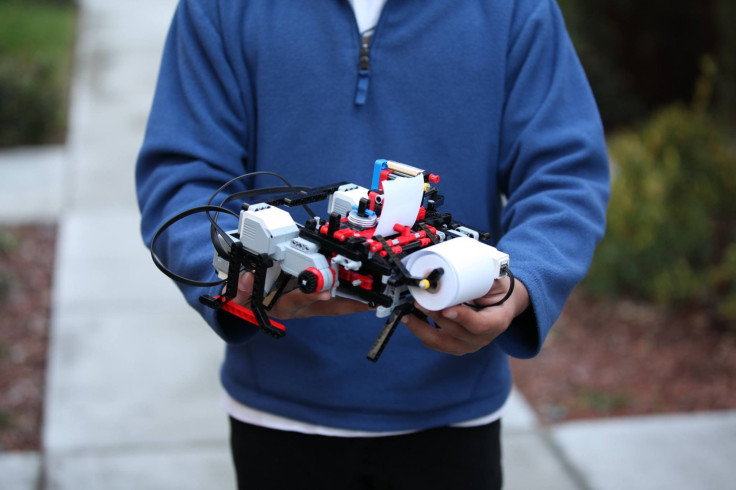7th Grader Builds 'Braigo,' A Braille Printer Made Out Of LEGOS

Lego toys have certainly come a long way over the years, especially with its series of robotics sets, of which the most recent one is called Mindstorms EV3. But even though Lego continues to innovate these products, they’re still — for the most part — meant for entertainment. A 12-year-old boy from California is looking to change that. Using Legos from the Mindstorms set, he’s built a basic, low-cost Braille printer that, should it work, would bring the joy of reading to millions of people around the world.
Shubham Banerjee, the boy behind the Braille printer, which he calls Braigo — a mash up of Braille and Lego — came up with the idea after seeing a flyer asking for donations to the blind. “Out of curiosity, I asked my parents, ‘How do blind people read?’” he told NPR. He then learned about how Braille works, and about the high costs of Braille printers, which can reach $4,000. “I thought it would actually be cool to combine my love of Legos, and do something good with it. …So I made the Braille printer out of Legos,” he said.
The Mindstorms EV3 pieces can obviously be built in whatever way, but Lego advises those who buy the products to first try building them as one of five preconceived characters, which look like insects, rovers, regular robots, and an insect. It comes with motors, infrared and color sensors, a programmable brick, and a remote control — it can also be controlled with smartphones and the like. Shubham used the three motors from the kit, which costs $350, to move the pins up and down, side to side, and to move paper through the printer. Besides pieces from the kit, he only spent an extra $5 on supplies — thumbtacks, weights — from Home Depot.
The National Federation of the Blind estimates that there are 6.6 million people in the U.S. who are visually impaired. Yet, since the 1980s, only about 10 percent are literate in Braille. If that’s the case in the U.S., a developed country, it can only get worse in developing countries, where 90 percent of the visually impaired live, according to the World Health Organization. And with the Braigo being so cheap, it would be easy for schools and other educational institutions to build and operate.
Shubham is making the details of his design and software available for anyone to use and tinker with. He also plans to make improvements to the printer, which would hopefully include a thicker kind of printing paper, as the current one doesn’t show the dots in the video (below). Meanwhile, people from all over the world have reached out to him on Facebook offering parts and accessories that will help him build an even better version.
Published by Medicaldaily.com



























